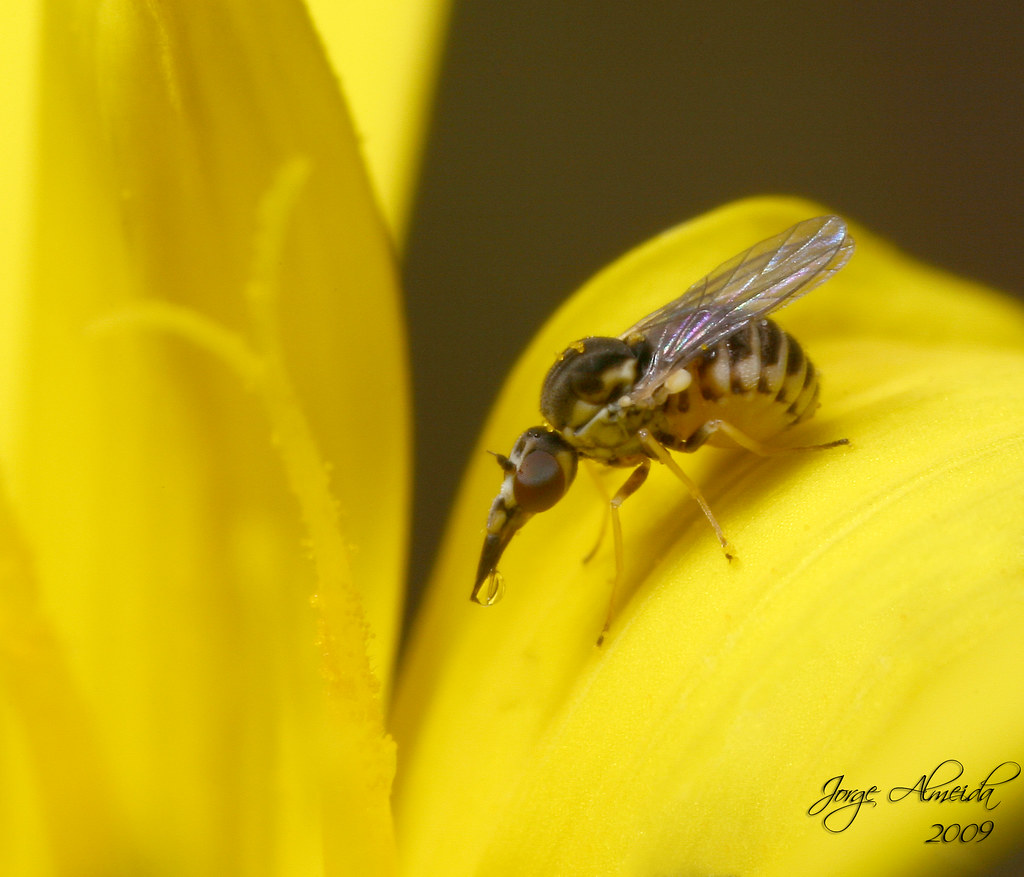Diptera.info :: Identification queries :: Diptera (adults)
Who is here? 2 guest(s)
|
Mythicomyiidae from Portugal :)
|
|
| jorgemotalmeida |
Posted on 01-07-2009 02:08
|
|
Member Location: Viseu - PORTUGAL Posts: 9296 Joined: 05.06.06 |
Hi to all! So long time I didn't post here SO I will begin to share with you one fantastic fly I found in Apulia... It is another freakin' Mythicomyiidae - one of my favourite families - in Asteraceae (?) flower... Is it correct, Sundew?  This is not so fantastic as the creamy yellow that Cor shoot in Turkey: http://diptera.in...d_id=22795 !!! That mythicomyiid is just unbelievable!  And here comes the portuguese mythicomyiid. It has about 3 mm. It is an Empidideicus hackmani. Is it right, David?   To see it bigger go here: http://www.flickr...1/sizes/o/ Edited by jorgemotalmeida on 01-07-2009 02:11 |
| David Gibbs |
Posted on 01-07-2009 09:13
|
|
Member Location: Bristol, UK Posts: 833 Joined: 17.06.06 |
jorgemotalmeida wrote: It is an Empidideicus hackmani. Is it right, David?  yes |
|
|
|
| jorgemotalmeida |
Posted on 01-07-2009 10:41
|
|
Member Location: Viseu - PORTUGAL Posts: 9296 Joined: 05.06.06 |
 nice. These tiny flies are commoner than I thought! nice. These tiny flies are commoner than I thought! |
| Sundew |
Posted on 02-07-2009 23:14
|
|
Member Location: Berlin and Baden-Württemberg, Germany Posts: 3938 Joined: 28.07.07 |
Hi Jorge, Fine that you are back, and with such great flies! Of course this is an Asteraceae flowerhead, but to say more is daring. The little beast sits on a hermaphroditic ray floret, which points to subfamily Cichorioideae. However, to be sure, check if the corolla consists of 3 or 5 fused petals (the number of the free tips is decisive). 5 is Cichorioideae, and in this case all florets should show the same construction and there should be no disc florets. If so, we then have the choice between about 3.200 species...  (Not all occur in Portugal, of course (Not all occur in Portugal, of course  !) !)
Edited by Sundew on 02-07-2009 23:14 |
|
|
|
| jorgemotalmeida |
Posted on 03-07-2009 10:25
|
|
Member Location: Viseu - PORTUGAL Posts: 9296 Joined: 05.06.06 |
Thanks David and Sundew. If I recall well, there were 5 fuse petals. I will confirm this later. Maybe it helps if I say that this flower was found in sand dunes. |
| Jump to Forum: |













